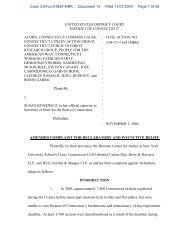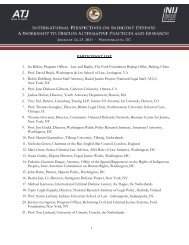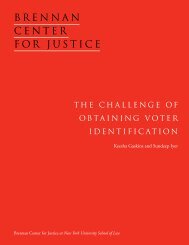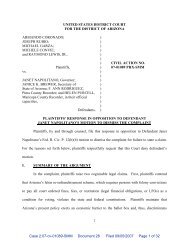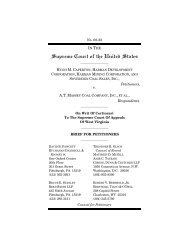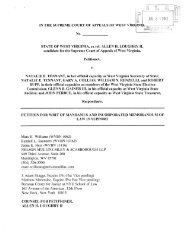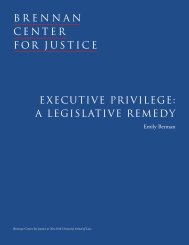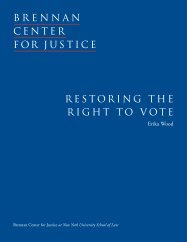THE NEW YORK STATE LEGISLATIVE PROCESS: AN ...
THE NEW YORK STATE LEGISLATIVE PROCESS: AN ...
THE NEW YORK STATE LEGISLATIVE PROCESS: AN ...
You also want an ePaper? Increase the reach of your titles
YUMPU automatically turns print PDFs into web optimized ePapers that Google loves.
34 <strong>THE</strong> <strong>NEW</strong> <strong>YORK</strong> <strong>STATE</strong> <strong>LEGISLATIVE</strong> <strong>PROCESS</strong>: <strong>AN</strong> EVALUATION <strong>AN</strong>D BLUEPRINT FOR REFORM<br />
■■ END-OF-SESSION PASSAGE<br />
The glut of legislation to be considered at the end of the legislative session is a<br />
pervasive problem across the country. “No practice of state legislatures’ workload<br />
management has been more thoroughly condemned than the end-of-session logjam<br />
of business.” 234 Out of 82 respondents to a 2001 survey by the National<br />
Conference of State Legislatures, 58 chambers reported that end-of-session logjams<br />
are unavoidable; in 1998, 43 out of 50 state legislatures surveyed experienced<br />
frequent logjam. 235<br />
Evidence is not available for this report to determine whether New York State’s<br />
Legislature has faced a greater logjam than other chambers in recent years. In<br />
1982, 48% of all laws passed in New York were passed in the last 10% of the<br />
session, while the national average was 38%. 236 Although not comparative, more<br />
recent statistics demonstrate that New York passes a large proportion of its<br />
major legislation at the very end of the session. From 1997 through 2001,<br />
approximately one of every four major laws was passed in the last three days of<br />
the session or in a special session day after the final day of the regular session. 237<br />
See Fig. 16.<br />
Plainly, the end-of-session logjam in New York acts as one of many practices and<br />
procedures that preclude legislators’ significant consideration of final legislation<br />
prior to a floor vote. Indeed, this problem may result at least in part from decisions<br />
by the legislative leaders and staff to bring bills before the full chamber at the<br />
final hour to avoid full review and possible objections by the members or by the<br />
public.<br />
■■ VOTE OUTCOMES<br />
An examination of all bills voted on in the Senate from 1997 through 2001 and<br />
in the Assembly from 1997 through 1999 demonstrates the amount of control<br />
FIGURE 16<br />
<strong>NEW</strong> <strong>YORK</strong> <strong>STATE</strong> LEGISLATURE<br />
■ MAJOR LEGISLATION PASSED IN FINAL THREE DAYS OF <strong>LEGISLATIVE</strong> SESSIONS<br />
OR DURING SPECIAL SESSION AFTER REGULAR SESSION, 1997-2001<br />
(% of Total Major Laws Passed in Same Year)<br />
Year Senate Assembly<br />
1997 8 (18.6%) 10 (23.3%)<br />
1998 4 (6.7%) 5 (8.3%)<br />
1999 14 (19.4%) 16 (22.2%)<br />
2000 22 (26.8%) 27 (31.2%)<br />
2001 18 (35.3%) 16 (25.5%)<br />
1997-2001 66 (21.4%) 74 (24%)



